What Are the Main Components of an IC Board
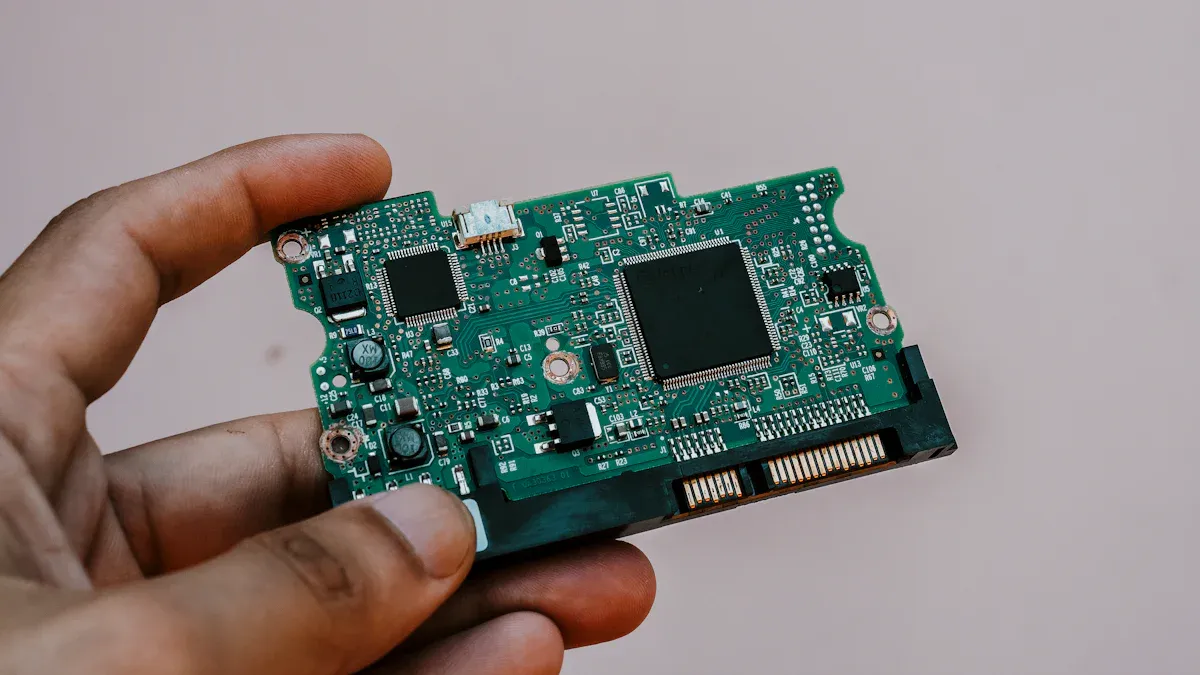
IC board components include both active and passive parts. Active components, such as integrated circuits and microcontrollers, control the flow of electricity. Passive components, like capacitors, resistors, and inductors, help with energy storage, filtering, and timing. Recent reports show that capacitors make up the largest share of passive components by volume and value. Connectors, sensors, relays, and transformers also play important roles on many boards.
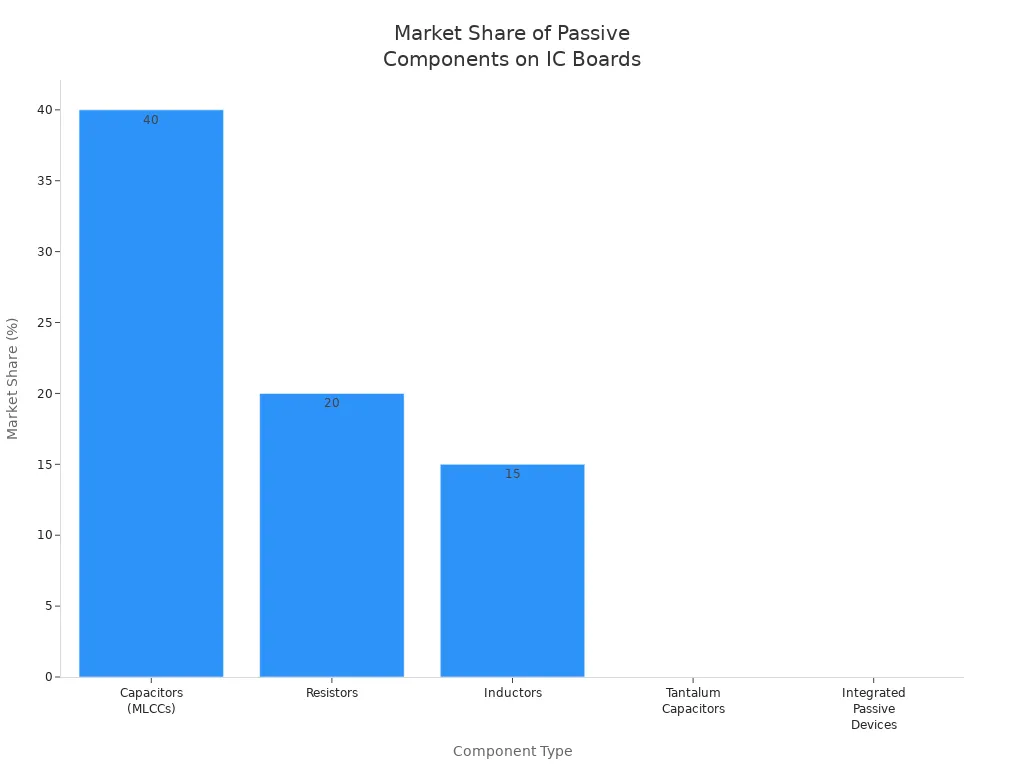
Knowing the different categories of these parts helps users select the right components for reliable and efficient electronic designs.
Key Takeaways
IC boards use active components like transistors and integrated circuits to control and amplify electrical signals, which are essential for circuit operation.
Passive components such as resistors, capacitors, and inductors manage energy flow by storing, filtering, and stabilizing power without adding energy.
Connectors, sensors, relays, and transformers support IC boards by linking parts, detecting changes, switching currents, and managing voltage safely.
Choosing the right components improves circuit reliability, performance, and power efficiency while making design and troubleshooting easier.
Understanding each component’s function helps engineers build better electronic devices and solve problems faster.
Types of IC Board Components
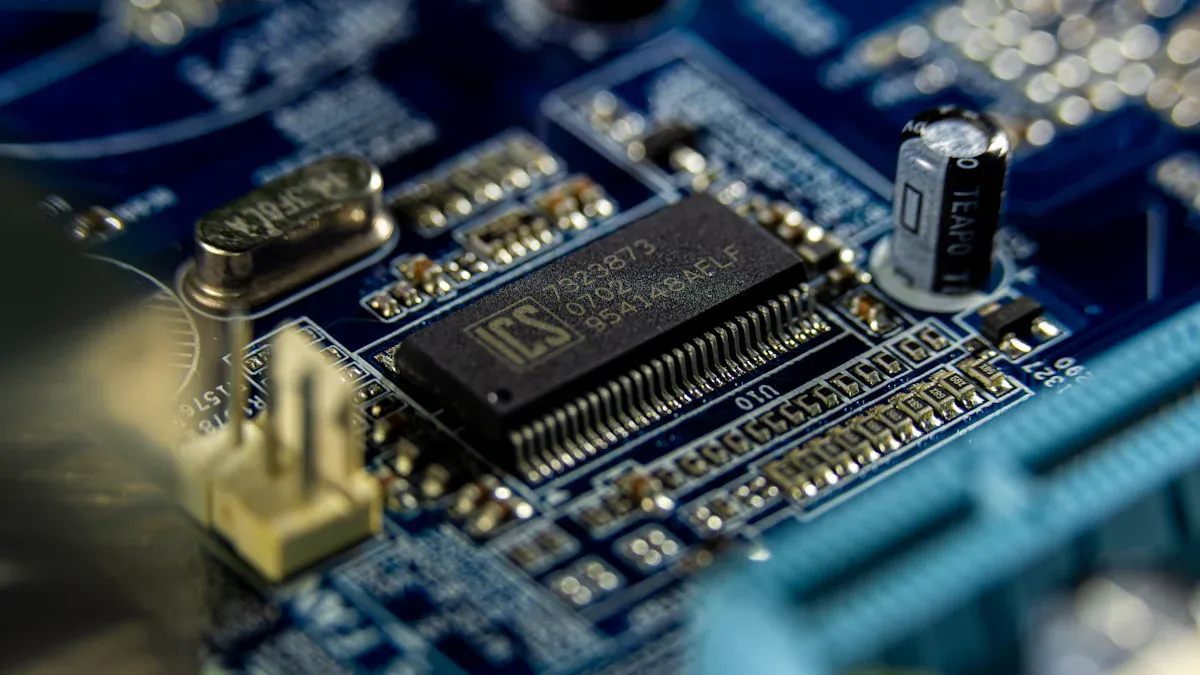
IC board components fall into two main categories: active and passive. Each category plays a unique role in how electronic circuits work. Some other important parts, such as connectors, sensors, relays, and transformers, also help the board function properly.
Active Components
Active components can inject power into a circuit. They control or amplify electrical signals. These parts need an external power source to work. Common examples include transistors, diodes, and integrated circuits. Active components help with switching, signal control, and amplification. They often have multiple ports, such as power, ground, and input/output. These parts impact the power consumption of the board because they require energy to operate.
Active components are essential for making decisions and controlling the flow of electricity in a circuit.
Passive Components
Passive components do not add energy to a circuit. They only store, consume, or release energy. These parts cannot amplify signals or introduce power. Examples include resistors, capacitors, and inductors. Passive components help with filtering, power delivery, and signal conditioning. They usually have simple two-port designs. These parts use less power and help manage how energy moves through the board.
Characteristic | Active Components | Passive Components |
|---|---|---|
Need external power | Do not need external power | |
Signal Behavior | Can amplify or control signals | Only store, consume, or release energy |
Examples | Transistors, diodes, integrated circuits | Resistors, capacitors, inductors |
Other Common Components
Many IC boards also use connectors, sensors, relays, and transformers. Connectors link different parts of the board and allow signals to pass between them. Sensors detect changes in the environment and turn them into electrical signals. Relays act as switches that use small signals to control larger currents. Transformers help manage voltage and energy distribution, making sure the board gets the right amount of power.
These extra components make ic board components more flexible and reliable for many uses.
Active IC Board Components
Transistors
Transistors play a central role in modern electronics. They act as both switches and amplifiers on IC boards. These small devices control the flow of electrical signals and help manage how circuits work. Transistors have three main parts: the Base, Collector, and Emitter. The Base acts like a gate. When a small current enters the Base, it allows a larger current to flow between the Collector and Emitter. This process lets transistors amplify weak signals or turn current flow on and off.
Transistors regulate electrical signals by controlling or amplifying them.
As switches, they turn current flow ON or OFF, which is key for digital data.
As amplifiers, they boost weak signals, important in audio and analog circuits.
MOSFETs are the most common type in modern IC board components, especially in digital circuits and microprocessors.
Transistors form the building blocks of integrated circuits, microprocessors, and memory devices. Without them, most electronic devices would not function.
Diodes
Diodes are simple yet vital parts of IC board components. They allow current to flow in only one direction, blocking it in the opposite direction. This property protects sensitive parts from damage caused by reverse currents. Diodes also help convert AC power to DC, regulate voltage, and protect against voltage spikes.
Diodes prevent reverse current that could damage components.
Reverse protection diodes stop harm from incorrect power connections.
Schottky diodes offer low voltage loss, making them efficient for protection.
Flyback diodes suppress voltage spikes from inductive loads.
TVS diodes absorb energy from voltage spikes, protecting sensitive electronics.
Zener diodes help keep voltage levels stable.
Common Use in IC Board Applications | |
|---|---|
Rectifier Diodes | Power conversion (AC to DC rectification) |
Zener Diodes | Voltage regulation and over-voltage protection |
Switching Diodes | Fast switching in digital circuits |
Fast Recovery Diodes | High-frequency switching and protection |
Schottky Diodes | Fast switching, low forward voltage drop |
TVS Diodes | Transient voltage suppression and circuit protection |
The 1N4004 diode is a popular choice for blocking reverse voltage and protecting circuits in power supplies and battery chargers.
Integrated Circuits (ICs)
Integrated circuits, or ICs, combine many electronic parts into a single chip. These chips can hold millions or even billions of transistors, resistors, capacitors, and diodes. ICs make electronic boards smaller, faster, and more reliable. They also help reduce power use and cost.
ICs improve space efficiency and reliability by combining many components.
Packaging protects the chip and helps manage heat.
Surface-mount technology (SMT) allows for smaller, high-speed designs.
Complex ICs, such as microcontrollers and microprocessors, enable advanced processing and control.
Electronic design automation tools, including AI, help engineers create more powerful and efficient ICs.
Digital Integrated Circuits | Logic gates, memory chips, microcontrollers, microprocessors, digital signal processors |
Analog Integrated Circuits | Amplifiers, filters, operational amplifiers, sensors, power management circuits |
Mixed-Signal Integrated Circuits | Chips that combine analog and digital functions, such as analog-to-digital and digital-to-analog converters |
Integrated circuits drive the performance and complexity of modern IC board components, making advanced electronics possible in everything from smartphones to cars.
Passive IC Board Components
Resistors
Resistors control the flow of electric current on IC boards. They have two terminals and provide a specific resistance, measured in ohms. By adding resistance, they limit how much current can pass through a circuit. This protects sensitive parts, such as LEDs and transistors, from too much current. When current flows through a resistor, some energy turns into heat. Engineers must choose resistor values carefully to keep devices safe and stable.
Resistors also help set the right voltage for other components. They can divide voltage, filter signals, and create timing circuits. In LED circuits, resistors prevent the lights from burning out by limiting the current. In microcontroller circuits, they keep current spikes from damaging the board.
Resistors play a key role in making sure each part of the circuit gets the right amount of current.
Resistors come in standard values and tolerances. The E-series defines these values, making it easier for engineers to pick the right resistor for each job. Tolerance shows how close the actual resistance is to the labeled value. Lower tolerance means higher precision.
E-Series | Values per Decade | Typical Tolerance | Description |
|---|---|---|---|
E6 | 6 | ±20% | Low precision, general purpose |
E12 | 12 | ±10% | Most common, general applications |
E24 | 24 | ±5% | Better precision than E12 |
E48 | 48 | ±2% | Precision applications |
E96 | 96 | ±1% | High precision |
E192 | 192 | ±0.5% or better | Extremely high precision, calibration |
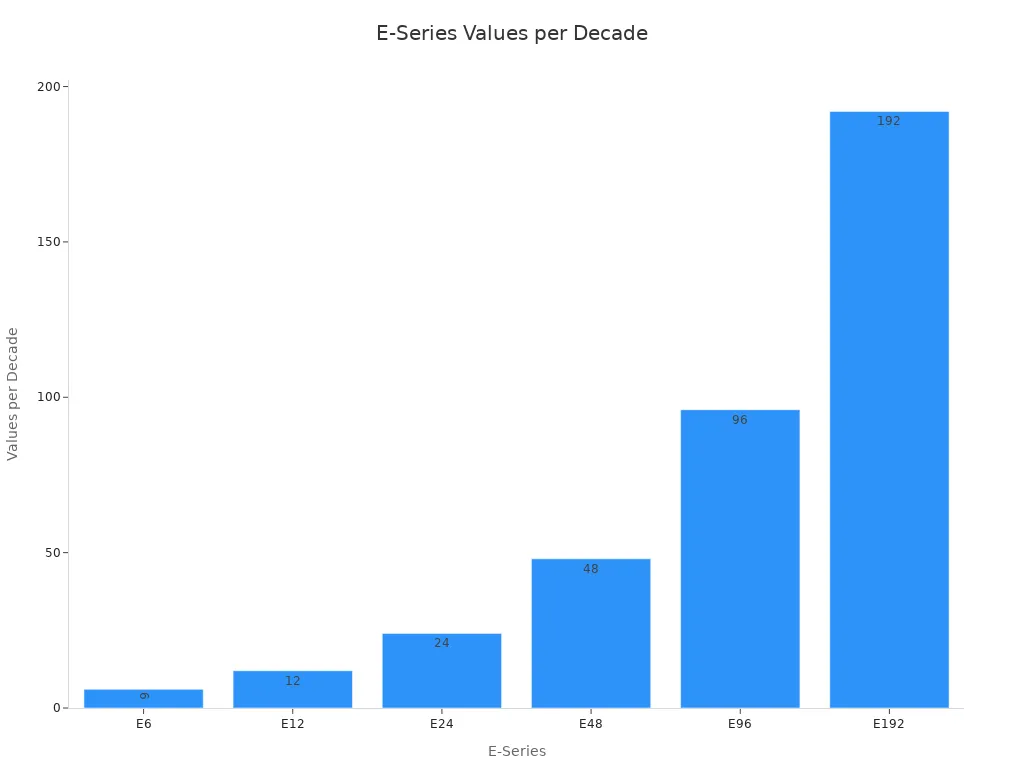
Capacitors
Capacitors store and release energy on IC boards. They help keep power steady by storing energy when voltage is high and releasing it when voltage drops. This action smooths out power supply changes and keeps devices running smoothly. Capacitors also block unwanted noise from power lines, making sure signals stay clean.
Capacitors allow AC signals to pass but block DC signals. This helps separate and couple signals in circuits.
They filter out high-frequency noise, improving signal quality.
Capacitors provide quick bursts of energy during sudden load changes, helping maintain voltage stability.
Ceramic capacitors, especially multilayer ceramic capacitors (MLCCs), are the most common type used in ic board components. They are small, reliable, and work well at high frequencies. Electrolytic capacitors store more energy and are used when larger capacitance is needed. Film and mica capacitors offer stability and precision for special uses.
Placing capacitors close to ICs reduces noise and improves circuit performance.
Inductors
Inductors store energy in a magnetic field when current flows through them. They help filter out unwanted signals and noise on IC boards. Inductors work with capacitors to form filters that block high-frequency interference. This keeps signals stable and protects other devices from electromagnetic interference (EMI).
Inductors come in many sizes, but most used on IC boards have values from a few nanohenries (nH) to tens of microhenries (µH). For example, 2.2 µH, 10 µH, 22 µH, and 47 µH are common values. Smaller inductors, such as those with 1-15 nH, are used in radio frequency (RF) circuits.
They suppress EMI, protecting sensitive parts.
Proper placement on the board prevents unwanted electromagnetic coupling.
Inductors help keep electronic circuits quiet and stable, making them essential for reliable ic board components.
Connectors and Other Components
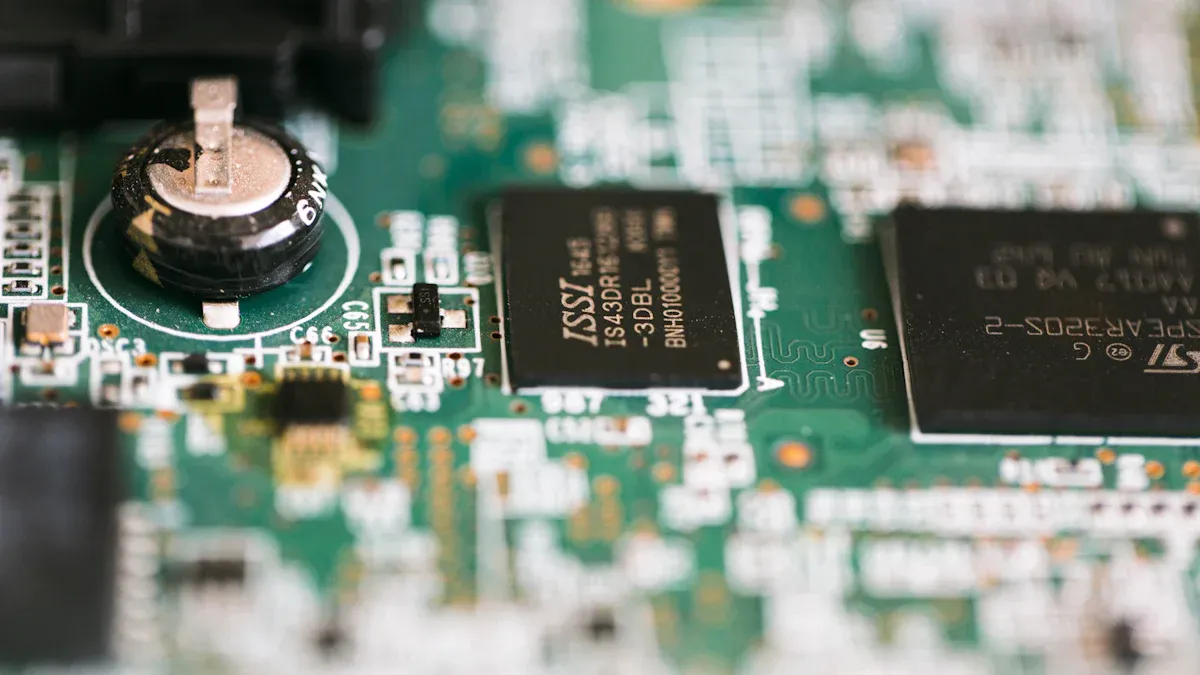
Connectors
Connectors link different parts of a circuit and allow current to flow between them. They join circuits into larger systems and help maintain signal integrity across devices. Common connector types include sockets, BGA sockets, board-to-board connectors, and cable-to-board connectors. These connectors make it easy to replace or upgrade parts without damaging the board.
Connectors use gold-plated contacts to reduce wear and corrosion.
Redundant contacts and high-conductivity materials improve reliability.
PCB mount connectors attach directly to the board for strong connections.
Tip: When selecting connectors, check for low contact resistance, strong insulation, and mechanical durability. Always read datasheets and choose connectors with a long life cycle.
Sensors
Sensors help ic board components interact with the physical world. They detect properties like temperature, pressure, motion, light, and sound, then convert these into electrical signals. Microcontrollers process these signals to make decisions or control other devices. For example, a temperature sensor in a phone helps adjust screen brightness or cooling.
Function / Application | |
|---|---|
Accelerometer | Detects motion, tilt, and vibration |
Gyroscope | Measures angular velocity |
Hall Sensor | Detects magnetic fields |
Proximity Sensor | Senses nearby objects |
Light Sensor | Measures ambient light |
Temperature Sensor | Monitors temperature |
Pressure Sensor | Measures pressure changes |
Motion Sensor | Detects movement |
GPS Sensor | Tracks location |
Tip: Choose sensors with proper packaging to prevent damage from moisture or heat. Always check compatibility with your board.
Relays
Relays act as switches on IC boards. They open or close circuits based on control signals, which helps manage current flow and protect sensitive parts. Electromechanical relays, reed relays, and solid-state relays are common types. Solid-state relays switch faster and last longer, while electromechanical relays handle higher currents.
Relays protect circuits by isolating faulty sections and preventing overloads.
PCB relays save space and improve reliability in compact devices.
Tip: Select relays with the right voltage and current ratings. Use flyback diodes to protect circuits from voltage spikes.
Transformers
Transformers convert voltage levels and provide electrical isolation. They use magnetic induction to transfer power between coils, which keeps input and output circuits separate. This isolation protects users and equipment from dangerous voltages and reduces noise.
Isolation transformers break ground loops and prevent high-frequency noise.
PCB-mount transformers fit directly on the board for efficient power conversion.
Tip: Pick transformers with the correct voltage, current, and isolation ratings. Check for reinforced insulation to ensure safety.
Understanding active, passive, and supporting components helps engineers design reliable and efficient electronic systems. This knowledge improves troubleshooting and ensures the right parts are chosen for each application.
Key benefits include better performance, easier problem-solving, and reduced design time.
Effective strategies involve using standard reference designators, checking polarity, and grouping parts by function.
For deeper learning, explore resources like Cadence PCB Design & Analysis, technical blogs, datasheets, and free design software trials.
FAQ
What is the difference between active and passive components?
Active components control or amplify electrical signals and need an external power source. Passive components only store, release, or consume energy. They do not add power to the circuit. Both types work together to make electronic circuits function.
How can someone identify components on an IC board?
Engineers use reference designators printed on the board, such as "R" for resistors or "C" for capacitors. Component shapes and sizes also help. Reading datasheets and using a multimeter can confirm the type and value of each part.
Why are connectors important on IC boards?
Connectors join different parts of a circuit. They allow signals and power to move between sections. Good connectors make repairs and upgrades easier. They also help prevent signal loss and improve the reliability of the board.
Can sensors work without a microcontroller?
Most sensors need a microcontroller or processor to read and process their signals. Some simple sensors, like thermistors, can work alone in basic circuits. For advanced features, a microcontroller helps interpret and use the sensor data.
What happens if a resistor value is too low or too high?
A resistor with too low a value can let too much current flow, which may damage parts. A resistor with too high a value can block current, causing the circuit to stop working. Choosing the right value keeps the circuit safe and reliable.
See Also
How Integrated Circuit Line Drivers Function In Electronics
A Comprehensive Guide To Battery Charger Controller ICs
Exploring The Features Of High-Performance Microcontroller ICs
How Integrated Battery Monitor ICs Operate And Their Benefits
